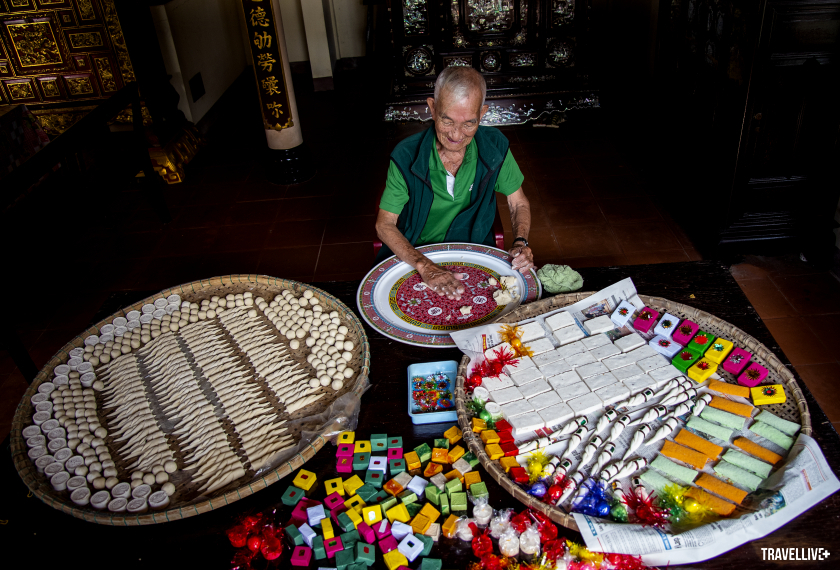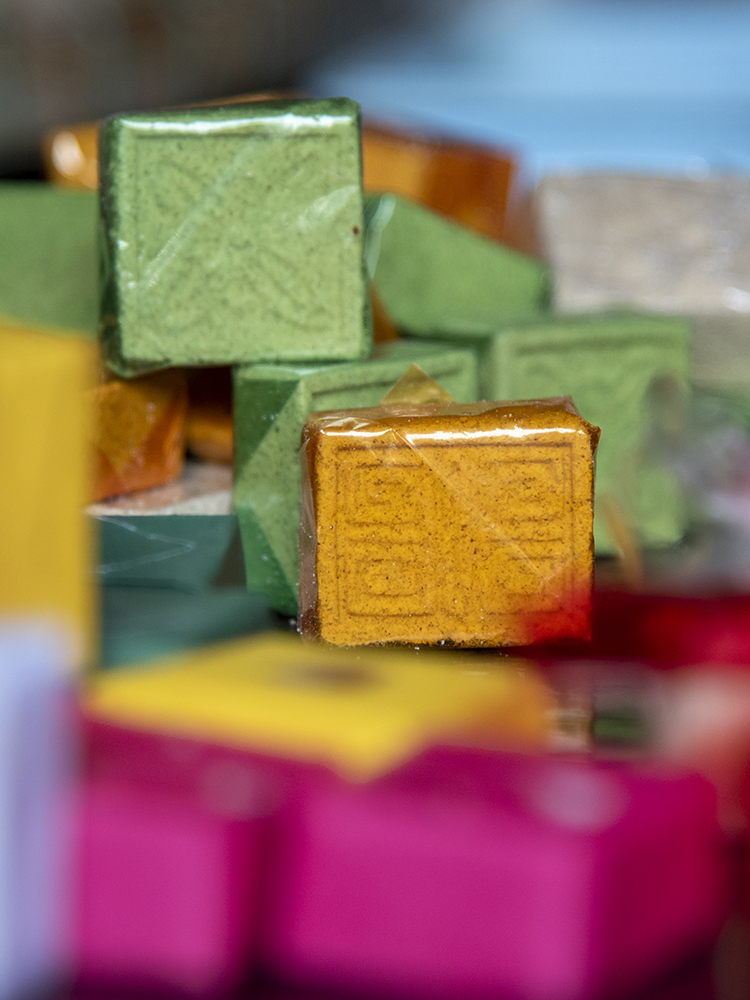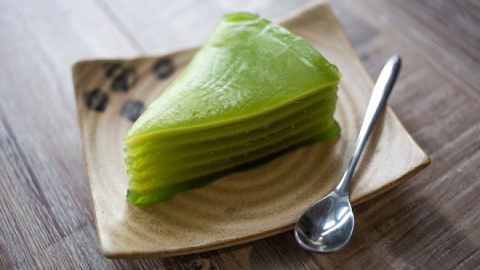Origin of the cake
Banh in is said to have originated in Kim Long village, during the reign of the Nguyen kings. The cake was used to present to the king to enjoy tea, so it is also called royal cake.
Kim Long village, also known as Kim Luong, was formed about 400 years ago. In 1636, Lord Nguyen Phuc Lan moved the capital to Kim Long, turning it into the administrative and military center of Dang Trong for a time. Later, under the Nguyen Dynasty, Kim Long land was granted to princes and mandarins to build palaces. For hundreds of years, this village was reserved for the nobility and mandarins.
People in Kim Long village now tell that, on the eve of Lunar New Year, a king (Nguyen) suddenly wanted to have a snack to go with light tea. The king then ordered some skillful elders in Kim Long to make a dish that was both delicious and not expensive, for the king to enjoy with tea.
After a while of discussion, the elders realized that the green bean source here was always available and abundant; just need to combine with a little sugar to make a delicious cake; the cost of making the cake was cheap. And so the first green bean cake was offered to the king by Kim Long village later, with the word "Tho" printed on the cake, implying the wish for the king's longevity. The king tried it and was satisfied, so he ordered to preserve this profession for future generations.

Photo: Le Huy Hoang Hai
compact yet elaborate cakes
In Kim Long village today, there are about 20 establishments producing “royal” cakes. The cakes are used by people to worship their ancestors and entertain guests on holidays and Tet. The cakes have also changed, from square to many other shapes such as round, rectangular, hexagonal... The ingredients for making the cakes are also more diverse, but the most popular and preferred are still green beans.
Although it is a small cake, to make Banh In, the maker must go through many steps. First, right from the stage of choosing the ingredients, it is necessary to be careful. The worker chooses the whitest flour, the best sugar, green beans with shells, round and even seeds. The beans are soaked for 5 hours and the shells are washed through many times of water before being cooked. While cooking, the beans are checked regularly to ensure the ingredients are cooked.
Then, the beans are mixed with white sugar, cooked on the stove, then left to cool until dry, and then pounded after 24 hours. After pounding, the powder is rubbed to get smooth, even grains. Before being printed into cakes, the powder is passed through a rolling machine to fluff up, then the surface of the cake will be smooth and beautiful.

Mr. Nguyen Xuan Lang (86 years old) has been making banh in - banh sam - banh pineapple for more than 70 years (Photo: Le Huy Hoang Hai)
Cakes are printed with molds of different shapes. The most popular is letter printing.longevity. While printing, the worker quickly and evenly spreads the cake so that it is square and not tilted. The printing force is moderate, not too strong to break the cake, but not too weak. Next, the cake is dried in a closed oven for 12 hours to achieve a crispy and fragrant blend.
When the cake comes out of the oven, everyone gathers to wrap it. The cake is wrapped in glossy paper with 5 colors representing the five elements, expressing the wish for a prosperous and full new year. That is why the cake is also called the five-color cake.
After wrapping the cake, building the tower is the final step. The cake is built according to the model of Phuoc Duyen tower, the symbol of Thien Mu pagoda. Normally, the tower will have 5 or 12 floors, the number depends on the demand. At this step, the artisan must arrange the cake meticulously, carefully, and gently so that the cake does not break.

Banh in, along with other typical Tet cakes of Hue, are displayed at Hue Ancient Houses (Photo: Thien Minh)
Every year-end months, Hue's banh in production facilities are busy with large orders to serve the religious needs of the people. Over time, banh in has also become a traditional cultural feature, reminding visitors of the typical image, only available during Tet - Spring in Hue.
Not only displayed at religious places, now, when tourists come to Hue in the spring, they can easily find banh in in resorts, garden houses, or modern cultural spaces.






























